Temitope Akinsiku
Advisor: Ralph Stern
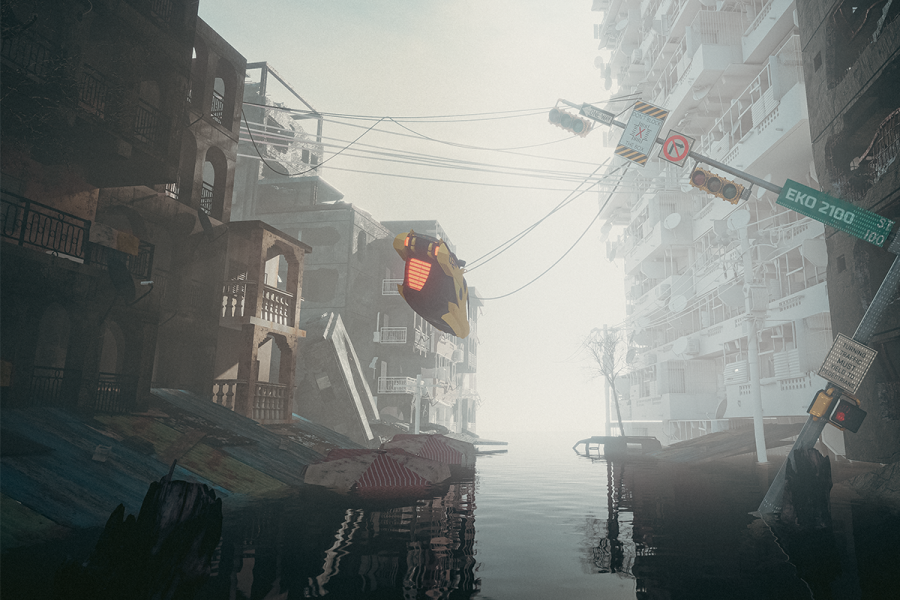
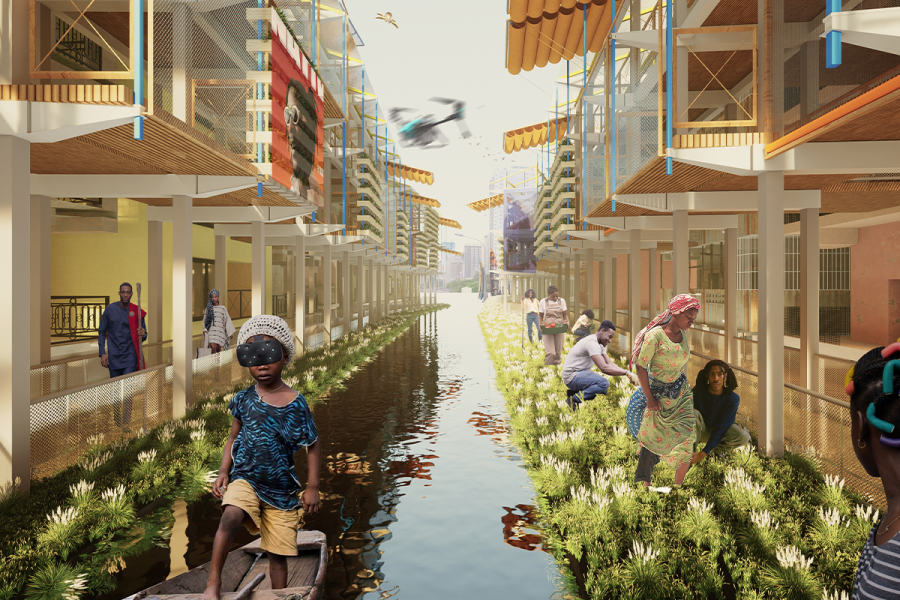
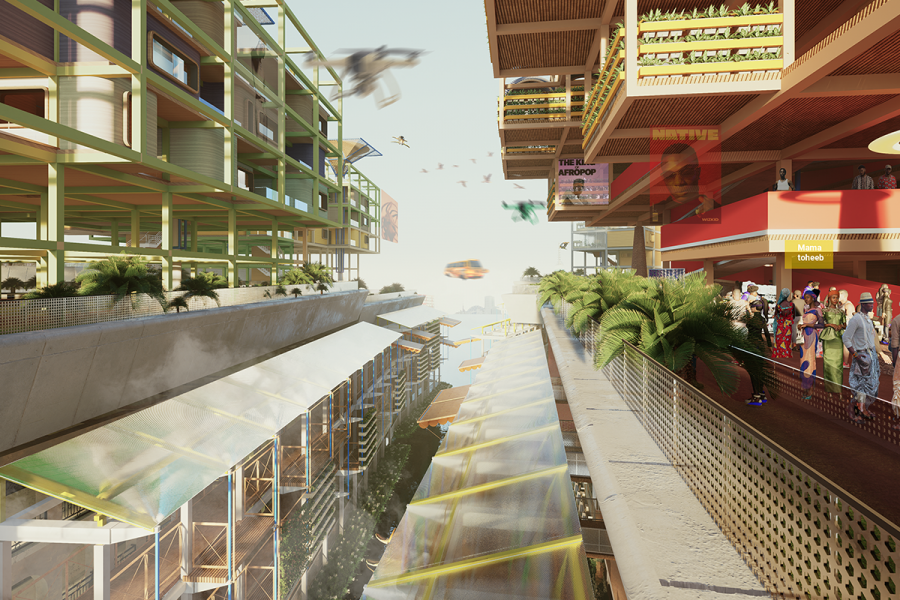
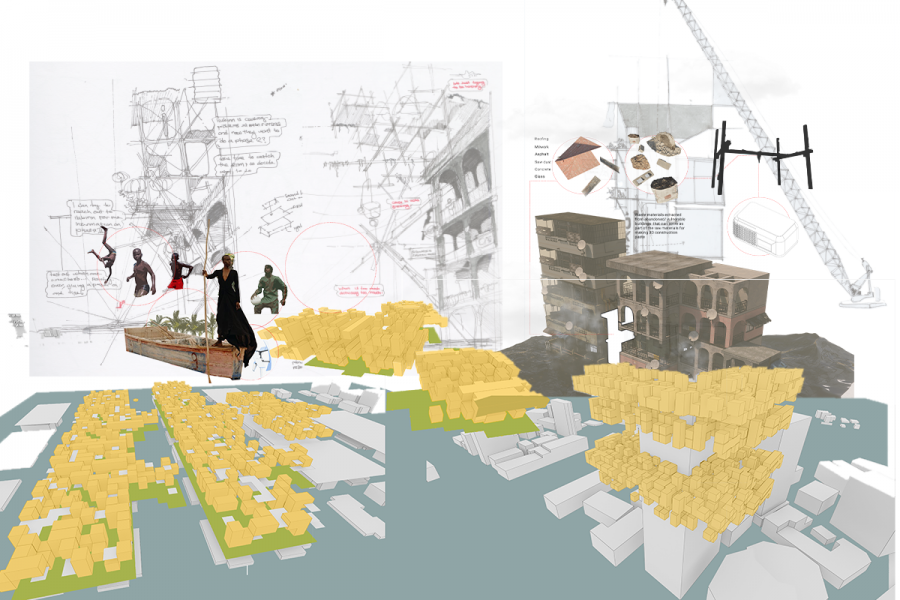
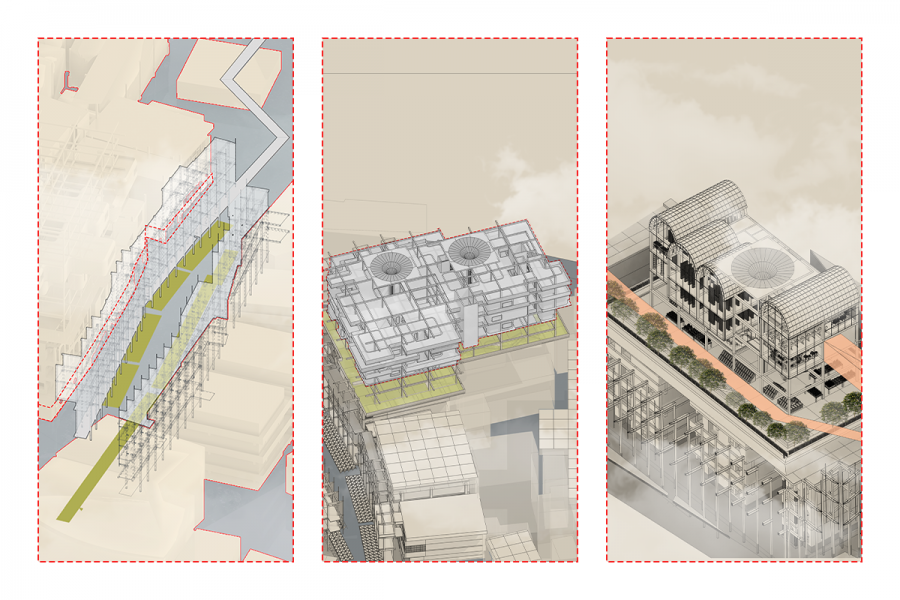
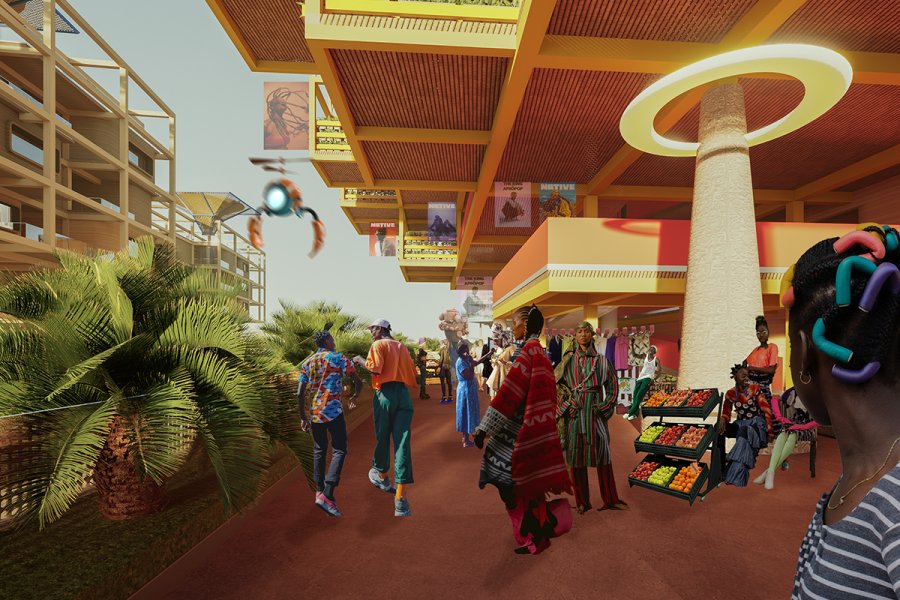
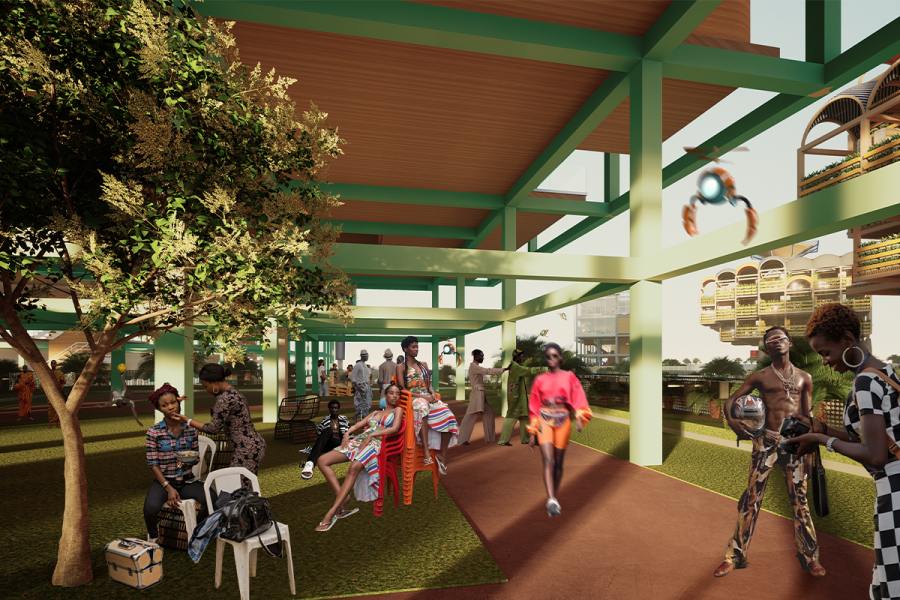
Èkó-Futurism; Adapting to a partially submerged Lagos in 2100
As the sea level rises, coastal cities remain vulnerable to cataclysmic environmental disasters that will plague the urban fabric. These communities constitute about 40% of the world’s population, with over 5 million inhabitants living within or near Sea Level Rise (SLR) hotspots.¹ By 2100, over 670 of these coastal communities and adjourning inland regions will suffer from the consequences associated with SLR. ² With global temperatures set to reach 2.7c if current trajectories persist, some level of environmental disaster is already inevitable,³ and the recent flooding events in Pakistan, Chad, Senegal, and Nigeria, emphasize the need to prepare for this inevitable future.
Eko (Lagos City), a low-lying coastal city in West Africa, is one of the many African cities threatened by rising sea levels by virtue of its geographical characteristics, and end-of-century predictions indicate a re-writing of the urban fabric by the impending coastal inundation.
Following the evident ecological advantages and environmental relatedness embedded within the architectural tectonics and urbanism of many pre-colonial African societies, this thesis sought to explore both past and present urban, architectural tectonics , ecological practices and material culture to uncover contextually relevant and culturally significant ideologies that may inform alternative pathways to addressing and adapting to both current and future urban challenges associated with the anthropogenic climate change.
The Yòrùbá animism belief system and her cosmology, which dictates a universal harmony, and is symbolically encoded in the core spatial and aspatial layers of her architecture and urbanism,4 inform this proposal. Consequently, this thesis attempts to subvert the current narratives of fighting coastal inundation or living on the water by emphasizing a new notion of living with water. Exploring the possibility of existing within the future-soaked condition of Lagos, this approach suggests a new ecological Harmony while creating urban densification for the future population expansion of the city.
This post-disaster narrative aims to engrain the inevitable future urban submergence in the public imagination of Lagosians to catalyze the necessary conversations and change the present systems of reactive measures to disasters, ensuring adequate preparation for Lagos’ soaked urban fabric in 2100.
1 Alison Raby, and Gerd Masselink, “Sea-level rise is inevitable. We need to adapt to avoid the greatest harm,” accessed November 2022, https://www.plymouth.ac.uk/news/pr-opinion/sea-level-rise-is-inevitable-we-need-to-adapt-to-avoid-the-greatest-harm
2 Laura Parker, “Sea Level Rise Will Flood Hundreds of Cities in the Near Future,” National Geographic, July 12, 2017, https://www.nationalgeographic.com/pages/article/sea-level-rise-flood-global-warming-science.
3 Rhiannon Niven, “Our planet “still in the emergency room”: Mixed results for climate and nature at COP27.” BirdLife, November, 2022. https://www.birdlife.org/news/2022/11/21/our-planet-still-in-the-emergency-room-mixed-results-for-climate-and-nature-at-cop27/.
4 O. T. Adejumo, “Geosophic Urbanism: A Local Urban Morphological Philosophy.” December 11, 2022. Retrieved from https://api-ir.unilag.edu.ng/server/api/core/bitstreams/4ef0c571-6cf2-4b79-b621-8300fce3b034/content
